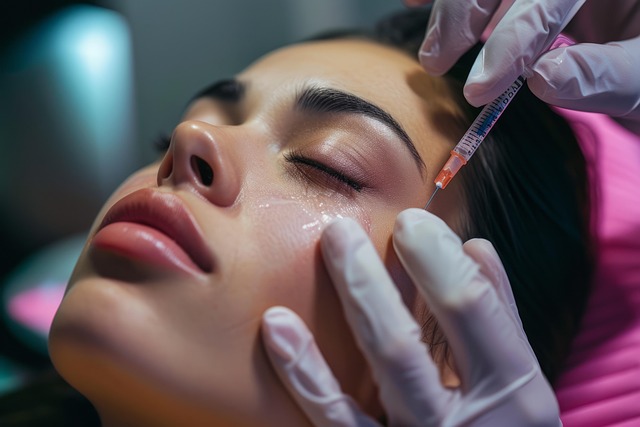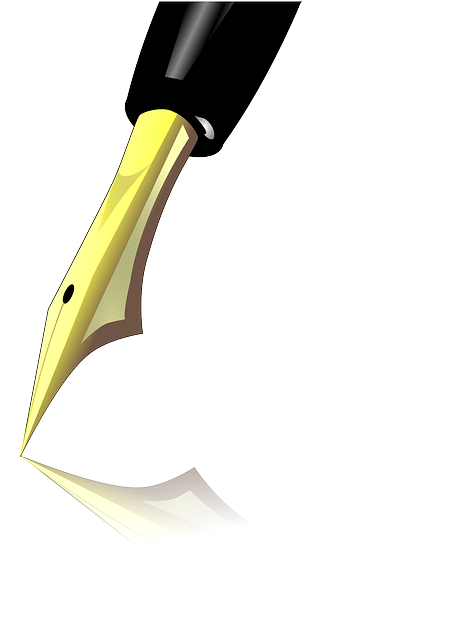This text compares Botox and dermal fillers as treatments for forehead wrinkles, emphasizing their differences in mechanism and effects. Botox relaxes muscles to prevent dynamic wrinkle formation, offering subtle, natural results that last 3-6 months, while dermal fillers enhance skin structure immediately for static wrinkles, with results lasting up to 2 years. The choice between them depends on individual needs, preferences for result duration, and desired level of treatment visibility. Both treatments are safe and effective, with Botox appealing for its non-invasive nature, minimal downtime, and natural appearance preservation.
Customized Botox treatments for forehead wrinkles are gaining popularity as a non-surgical solution for achieving smoother, more youthful skin. Forehead lines, caused by muscle activity and environmental factors, can range from mild expression lines to deep, persistent creases. This article explores the science behind Botox’s ability to relax muscles and prevent wrinkle formation, compares it to dermal fillers, and delves into procedure details, benefits, risks, recovery, and long-term maintenance for both options.
Understanding Forehead Wrinkles: Causes and Types

Forehead wrinkles can vary in depth, pattern, and cause. They are primarily categorized into two types: dynamic and static. Dynamic wrinkles form due to repeated muscle contractions, often from frowning or squinting, and typically disappear when the muscles relax. These are usually the wrinkles that give a “frown line” appearance between the eyebrows. Static wrinkles, on the other hand, are permanent creases in the skin caused by underlying structural changes, such as collagen loss or elastic tissue damage.
When it comes to addressing forehead wrinkles, Botox and dermal fillers are two popular non-surgical options. Botox is a protein derived from bacteria that relaxes muscles, reducing dynamic wrinkle appearance. It’s effective for treating frown lines and the horizontal wrinkles across the forehead. Dermal fillers, on the other hand, are injectable materials that add volume to the skin, smoothing out both dynamic and static wrinkles. They can fill in deep creases and provide immediate results. The choice between Botox and dermal fillers depends on the type and severity of your forehead wrinkles.
The Role of Botox in Treating Forehead Lines

Botox has established itself as a popular and effective treatment for forehead wrinkles, offering a non-surgical alternative to dermal fillers. Unlike dermal fillers that add volume and plump the skin, Botox works by relaxing the muscles responsible for causing dynamic lines and creases on the forehead. This gentle relaxation prevents the contraction of these muscles, thereby reducing the appearance of wrinkles over time.
When compared to dermal fillers, Botox provides a more subtle and natural-looking result, making it ideal for patients who prefer a less dramatic approach to skincare. Moreover, Botox treatments are generally shorter in duration and require less recovery time. Its temporary nature means that results can be adjusted or modified as needed, providing individuals with greater flexibility in managing their forehead wrinkles compared to the semi-permanent effects of dermal fillers.
Dermal Fillers: An Alternative to Botox

While Botox is a popular choice for reducing forehead wrinkles, it’s not the only option available. Another effective alternative is dermal fillers. These substances, typically composed of hyaluronic acid, are injected into the skin to enhance its volume and smooth out lines and wrinkles. Unlike Botox, which works by paralyzing muscles, dermal fillers add structure and plumpness to the skin, providing a more immediate result.
When considering Botox vs dermal fillers, it’s important to understand the differences in their mechanisms of action and effects. Botox offers a preventive approach, relaxing muscles to prevent future wrinkle formation, while dermal fillers provide a corrective solution by instantly restoring volume loss and smoothing existing wrinkles. The choice between the two depends on individual preferences and goals, with both offering safe and effective ways to combat forehead wrinkles.
Comparing Botox and Dermal Fillers for Forehead Wrinkles

When it comes to addressing forehead wrinkles, both Botox and dermal fillers are popular non-surgical options. The key difference lies in their mechanisms of action. Botox, a neurotoxin, relaxes the muscles responsible for causing dynamic wrinkles, such as those formed by frowning or raising your eyebrows. This results in a smoothing effect that lasts several months. On the other hand, dermal fillers enhance the skin’s structure by injecting hyaluronic acid or collagen into the forehead area, plumping and lifting the skin to reduce static wrinkles. Fillers offer immediate results and can last for up to two years, making them a preferred choice for those seeking longer-term solutions.
The choice between Botox and dermal fillers depends on individual preferences and specific wrinkle patterns. Botox is ideal for people with dynamic wrinkles caused by muscle activity, while dermal fillers are more suitable for addressing static wrinkles and providing a more substantial lift. Additionally, individuals who prefer a non-invasive approach with quicker results might lean towards dermal fillers, whereas those seeking longer-lasting solutions could opt for Botox.
Procedure and Application Techniques for Customized Treatments

The procedure for customized Botox treatments involves a precise and skilled application process tailored to each patient’s unique facial needs. It begins with a detailed consultation where a dermatologist assesses the severity of forehead wrinkles, considers individual skin characteristics, and discusses expectations. This personalized approach ensures optimal results, addressing specific concern areas while minimizing side effects.
As compared to dermal fillers, Botox offers a more targeted solution for dynamic wrinkle reduction. Dermal fillers are often used for deeper, static lines and volume loss, injecting hyaluronic acid or other substances beneath the skin to fill and smoothen out wrinkles. In contrast, Botox is injected into specific muscle groups responsible for causing forehead wrinkles when activated by facial expressions. This selective targeting makes Botox particularly effective for fine lines and expression lines, providing a subtle yet noticeable improvement in appearance without altering facial symmetry.
Benefits, Risks, and Recovery Times of Botox Injections

Botox injections for forehead wrinkles offer a number of benefits, particularly when compared to dermal fillers. One key advantage is their non-surgical nature, making them a less invasive option that avoids the potential risks associated with more extensive procedures. Botox also provides a natural look, smoothing out wrinkles without appearing overly artificial. This subtle enhancement can be especially appealing for those seeking to maintain a youthful appearance while preserving their natural expression.
However, it’s important to weigh these benefits against potential risks. While rare, side effects may include temporary muscle weakness, bruising or swelling at the injection site, and headaches. Proper selection of an experienced provider is crucial to mitigate these risks. Recovery times are generally brief, with most individuals experiencing little to no downtime after the procedure. This makes Botox a convenient choice for those who desire immediate results without lengthy recovery periods, as compared to dermal fillers which can take several days to show full effects and have longer recovery windows.
Choosing the Right Treatment Plan for Your Skin Concerns

When considering treatment for forehead wrinkles, it’s crucial to understand that every skin is unique. A comprehensive consultation with a qualified dermatologist or aesthetic specialist is essential to determine the most suitable approach. One key decision point is whether to opt for Botox or dermal fillers.
Botox is a popular choice for dynamic wrinkle reduction, particularly for expressions lines and crow’s feet. It works by relaxing muscles, smoothing out fine lines and wrinkles. On the other hand, dermal fillers offer a more structural approach by plumping and filling in deeper creases and folds, providing instant results. The right treatment plan depends on factors like skin type, severity of wrinkles, desired outcome, and individual healing capabilities.
Long-term Effects and Maintenance of Results

When considering Botox for forehead wrinkles, understanding the long-term effects is crucial. Unlike dermal fillers, which can last up to 2 years, Botox typically provides results that last between 3 to 6 months. This means regular treatments are necessary to maintain the desired smoothing effect. However, this predictability allows individuals to schedule their procedures according to their lifestyle and preferences, ensuring they look and feel their best consistently.
The beauty of customized Botox lies in its ability to offer subtle, natural-looking enhancements. Over time, as wrinkles reduce, so does the need for frequent treatments. Many patients report satisfaction with the results, finding that their skin appears rejuvenated and relaxed without appearing artificial or overdone—a significant advantage when compared to dermal fillers, which can sometimes result in more noticeable, uneven outcomes.
